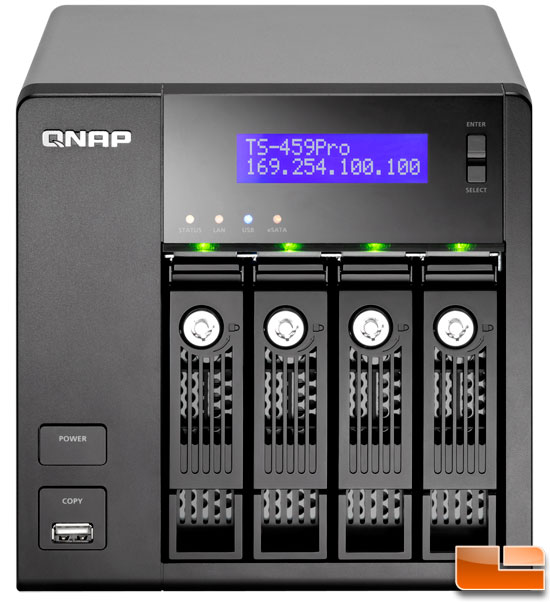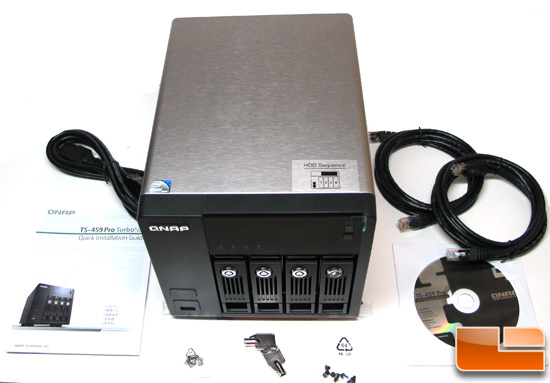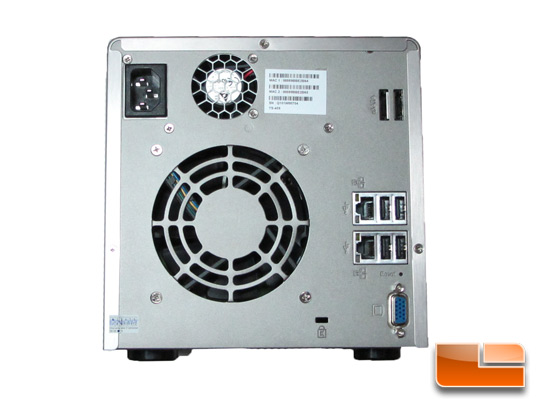QNAP TS-459 Pro Turbo NAS with Intel Atom D510 Review
TS-459 Pro – Inside the Box

In our last QNAP review, we mentioned how we hate buying something and when you get it home, have to run out and purchase additional items. Once again, QNAP does a great job of providing all the additional parts needed to get the TS-459 Pro up and running. The box for the TS-459 Pro included the power cord, two Ethernet cables, mounting screws for the hard drives, hard disk keys, the TS-459 NAS and a CD-ROM with software for setting up the NAS.

The front of the TS-459 Pro looks like any other QNAP 4 Bay NAS complete with LED indicators allowing instant status of the four internal hard drives, LAN, USB and eSATA connections. Also on the front are the power button and a One-Touch backup button for easy backups. This is an interesting backup feature, allowing one way copying from your USB drive to a pre-selected folder on the NAS or from a pre-selected folder on the NAS to the USB drive.

The back of the TS-459 Pro is where we can see some differences between the two systems. The TS-419P used an AC to DC power converter which I personally hate because of the large brick in the middle of the cords. One power cord makes cable management so much easier and the TS-459 Pro has now gone that route. You can see at the top right the 2 x eSATA connections and below that, the 4 x USB connections.
There are also the 2 x 1 gigabyte Ethernet connections which allow connections on two separate networks or the ability to use port trunking. Port trunking allows two Ethernet ports to be bonded into a single Ethernet port. This usually requires a switch with this type of capability. I experimented with the different port trucking options such as Balance-rr (Round Robin), Balanced-tlb (Adaptive Transmit Load Balancing) and Balance-alb (Adaptive Load Balancing). All three of these options didnt require a special network switch and just had to be configured to use. Round Robin seemed to perform the worst compared to using a single Ethernet connection, where as the Adaptive Load Balancing did the best increasing the Read and Write transfer rates by about 4-5 MB/sec. There is not much performance increase for using two Ethernet connections. Of course, I am still only using a single connection on the other end which could explain the small increase.

Comments are closed.